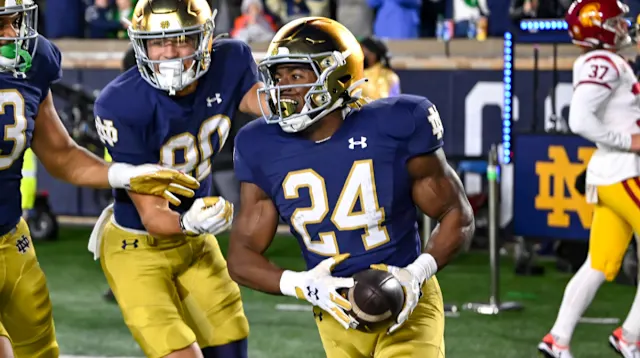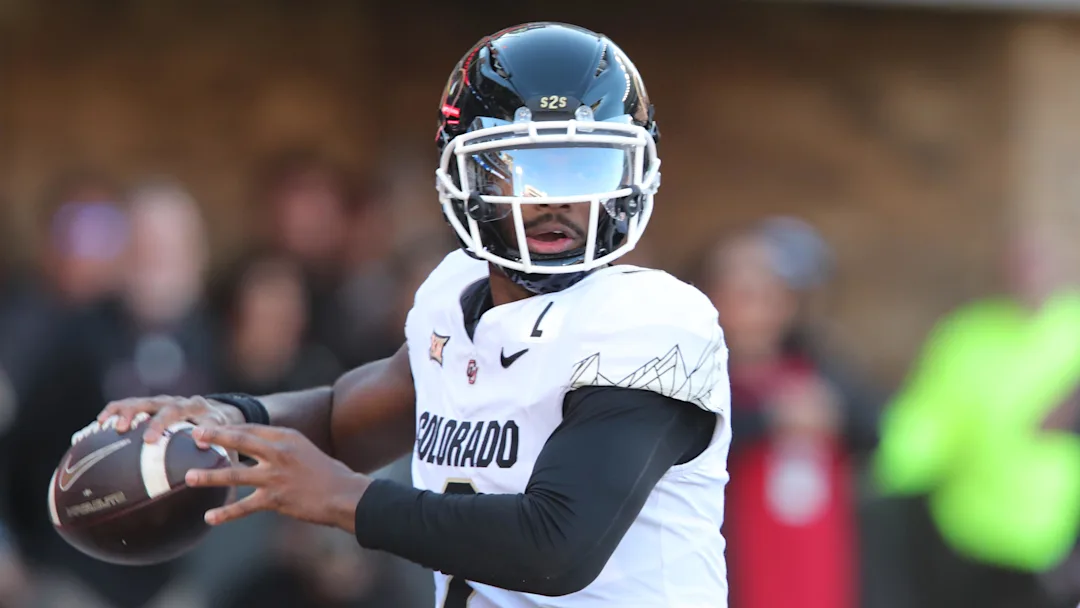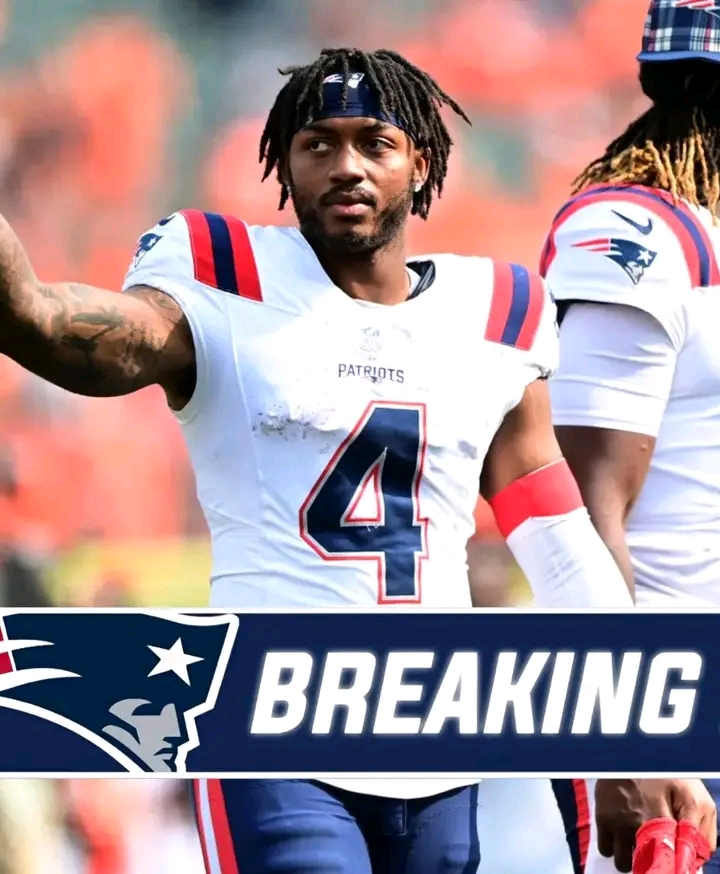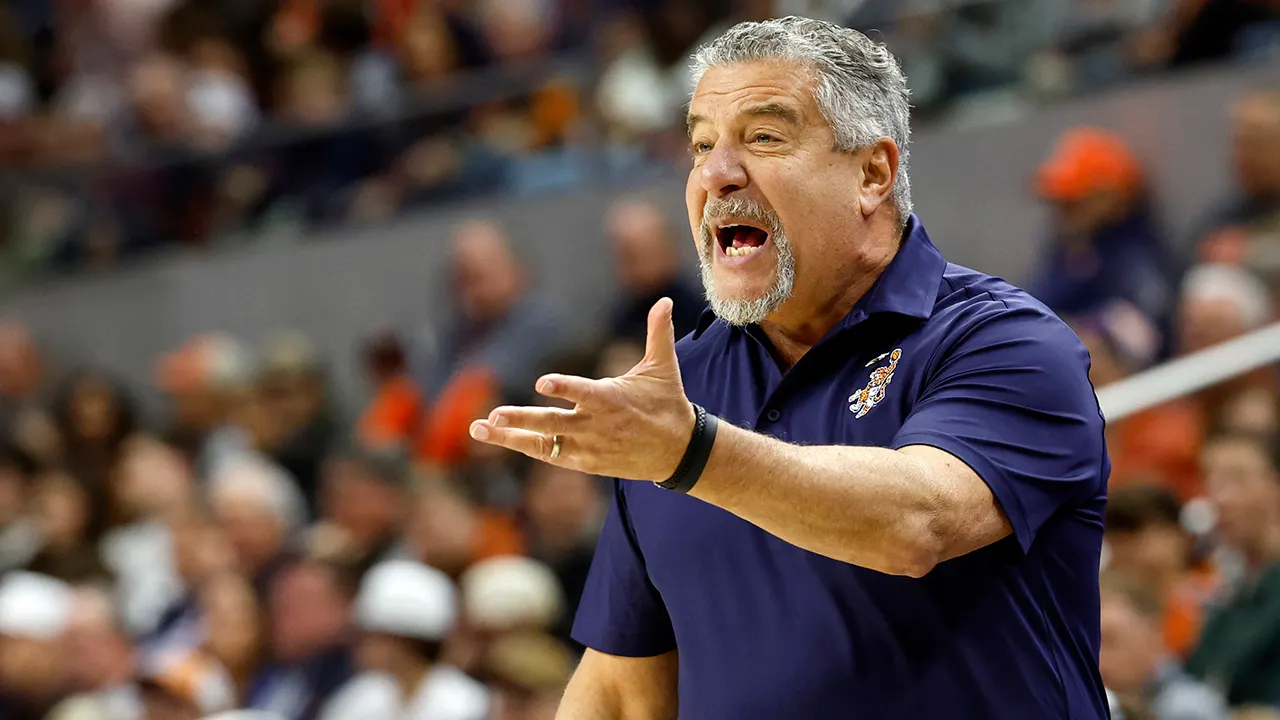As college football enters the 2025 season, one of the most hotly debated position groups across the nation is the running back room. With the sport evolving into a more pass-heavy game driven by quarterback play and high-octane aerial schemes, the importance of the ground game has not faded. In fact, it’s made elite running back depth even more crucial. Whether for managing game tempo, red zone efficiency, or weather-dependent contests in November, a dominant run game still separates contenders from pretenders.
So where does Notre Dame stand in this equation? Does the Irish backfield stack up with the elite units assembled by SEC titans like Georgia and Alabama, or Big Ten powerhouses like Michigan and Ohio State? The answer isn’t black and white — but it’s certainly worth exploring.
Notre Dame’s backfield is deep, experienced, and oozing potential. The Irish enter 2025 with a stable of backs that blend power, speed, and vision in equal measure. Leading the charge is Jadarian Price, who finally appears poised to take over as the feature back. After battling through injuries early in his career, Price flashed brilliance in 2024, showing off elite burst and balance in limited action. With a full offseason to prepare and a clearer path to lead-back duties, Price is set to become a national name.
Behind him, Gi’Bran Payne and Jeremiyah Love provide complementary skill sets. Payne is the between-the-tackles grinder who can wear down defenses late in games, while Love brings the home-run ability with straight-line speed and lateral agility. Then there’s rising underclassman Aneyas Williams, who many within the program believe could be the most talented of the bunch. His versatility as both a runner and receiver gives Notre Dame the type of modern offensive weapon that can stress defenses in multiple ways.
It’s not just about raw talent either. Notre Dame’s offensive line — traditionally one of the best in the country — is again expected to be a strength. That synergy between a physical front and a deep running back room gives the Irish a strong case to be ranked among the top five in the nation. But to claim the title of best? That’s where things get murky — because the competition is fierce.
Let’s start in the SEC, where Georgia continues to churn out elite running back talent like a factory. The Bulldogs are loaded once again. Branson Robinson returns as a junior with a bruising running style and proven production, and he’s joined by rising star Roderick Robinson II, who offers more finesse and acceleration. Georgia also added a top-five RB in the 2025 class, further cementing their backfield as one of the most talented and physically imposing in the nation. Their track record, depth, and offensive scheme all point toward another dominant year on the ground.
Alabama, too, remains a force despite some fluctuation in offensive identity. The Crimson Tide’s RB room, led by Justice Haynes, remains as explosive as ever. Haynes is a blend of speed and strength, and he’s complemented by Jam Miller and Richard Young — both of whom could start at most Power Five schools. Even with the emergence of a more pass-friendly offense in Tuscaloosa, Bama’s backfield remains a weaponized unit with pro-level upside at every position.
Michigan, under new leadership after the Jim Harbaugh era, isn’t going anywhere either. Donovan Edwards returns with unfinished business, and the Wolverines continue to field a line-first identity that opens massive holes for their backs. Edwards, with his blend of power, receiving ability, and postseason experience, gives Michigan a legitimate Heisman dark horse. While the depth might not be as staggering as Georgia’s, the top-end talent certainly is.
Ohio State is undergoing more change than usual but still brings a dynamic backfield to the field in 2025. Quinshon Judkins transferred in from Ole Miss in 2024 and made an immediate impact, bringing an SEC-level physicality to the Buckeyes. With explosive sophomore Dallan Hayden also in the fold, Ohio State has both the thunder and lightning formula that causes nightmares for defensive coordinators.
Elsewhere in the Big Ten, Penn State has quietly built one of the deepest RB rooms in the country. Nick Singleton and Kaytron Allen return as one of the most productive one-two punches in college football. Singleton is the breakaway threat who can turn a 5-yard gain into a 60-yard touchdown, while Allen is the battering ram who wears out defenders over four quarters. With both players likely to be early-round NFL picks, it’s hard to argue against the Nittany Lions belonging in the top three nationally.
Then there’s Florida State and Oregon — two programs that have become relevant in the RB conversation due to recruiting and system fit. The Seminoles return a strong duo in Lawrance Toafili and Caziah Holmes, while also boasting a stable of underclassmen ready to break out. Oregon, under Dan Lanning, has quickly adopted a power-spread identity that relies heavily on run-game balance. Jordan James and Dante Dowdell lead a group that’s productive and explosive.
So how does Notre Dame compare? On paper, the Irish may not have a single player more decorated than Donovan Edwards or Branson Robinson, but their collective depth and balance is arguably more complete. There’s no weak link. No “just a guy” in the room. Every back brings something different, and that makes them hard to scheme against.
Price is a breakout star waiting to happen, and Williams’ ability to flex into the slot or line up in motion gives the Irish a schematic advantage. Payne’s consistency in pass protection and short-yardage situations ensures reliability, and Love’s acceleration on outside zone plays offers a different gear. That balance means the Irish can game plan for specific defenses and situations without a drop-off in talent.
Another underrated aspect is continuity. Most of Notre Dame’s top backs have been in the system for multiple years, and they understand the expectations of playing in a pro-style offense that demands discipline. Running back coach Deland McCullough deserves credit for developing the group with NFL-level fundamentals while still emphasizing physicality and vision.
So where should Notre Dame rank? A fair argument puts them firmly inside the top five, perhaps behind Georgia, Penn State, and Michigan, with Alabama and Ohio State rounding out a tier of six that sit atop the national conversation. But in terms of total system fit, usage, and versatility, Notre Dame arguably has the most dynamic combination of skill sets in the country.
To claim the No. 1 spot, however, production must match potential. The Irish have to show they can run consistently against top defenses, especially late in the season. That means no vanishing acts in November and no conservative game plans that limit the backs’ impact. The running game needs to be a strength, not just a supplement.
With a new quarterback under center and a talented, but still young, wide receiver corps, the Irish would be wise to lean into their strength in the backfield early and often. If the offensive line holds up and Price becomes the lead dog many believe he can be, Notre Dame could ride its running game deep into the playoff race.
The Irish may not have the headline five-star from a Southern pipeline or the SEC media push, but they’ve quietly built one of the most efficient, balanced, and deep running back rooms in the country. In a season that promises chaos and parity, that kind of consistency could be the difference between another 10-win season and a shot at a national title.
So while the Big Ten and SEC powers may still wear the crown when it comes to recruiting buzz and preseason rankings, don’t sleep on Notre Dame. This backfield isn’t just good. It’s built to dominate — quietly, steadily, and with a chip on its shoulder.




